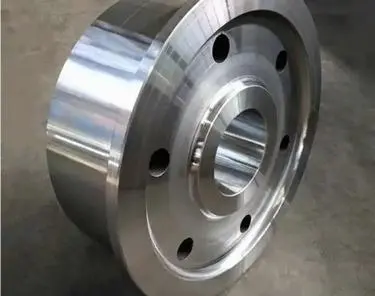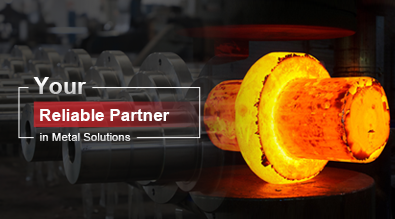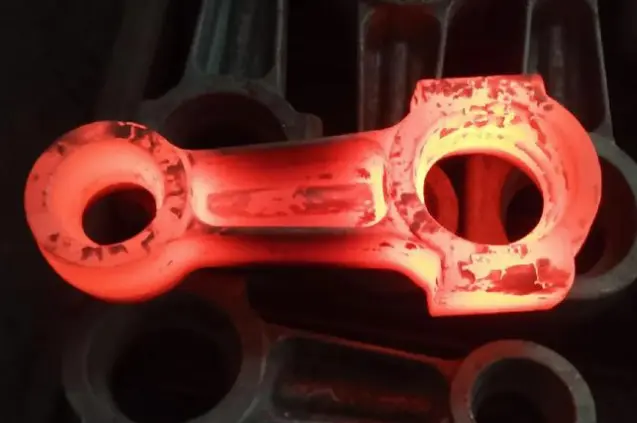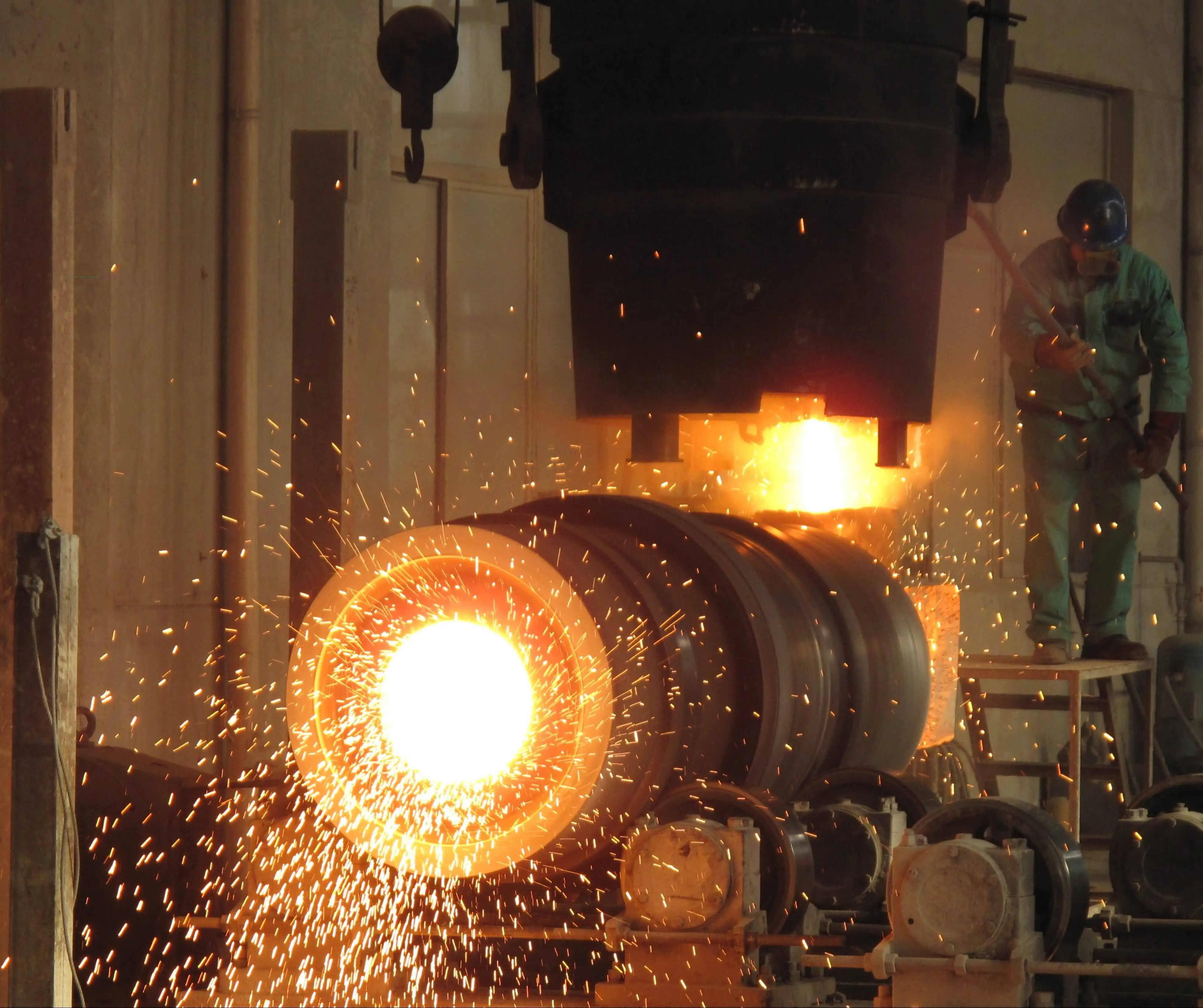Which Industries Use Forgings?
Forgings play a crucial role in numerous industries, providing strong, durable, and reliable forging parts and components for a wide range of applications. The forging process, which involves shaping metal through compressive forces, has been utilized for centuries and continues to be a vital manufacturing technique in modern times. From aerospace to automotive, energy to construction, forgings are essential in producing high-quality parts that can withstand extreme conditions and heavy loads. The versatility of forging allows for the creation of components with superior mechanical properties, improved grain structure, and enhanced strength-to-weight ratios. As industries continue to evolve and demand increasingly complex and robust parts, the importance of forgings in various sectors remains paramount, driving innovation and technological advancements in the field of metal forming.

What are the most common applications of forged parts in the automotive industry?
Engine Components
Forged parts are extensively used in automotive engines, providing crucial components that must withstand high temperatures, pressures, and repetitive stress. Crankshafts, connecting rods, and camshafts are among the most common forged engine parts. These components benefit from the forging process, which enhances their strength and durability, allowing them to perform reliably under extreme conditions. Forged pistons, for example, offer superior strength-to-weight ratios compared to cast alternatives, contributing to improved engine efficiency and performance. Other forged engine components include valve stems, rocker arms, and timing gears, all of which benefit from the improved mechanical properties achieved through forging.
Transmission Systems
Transmission systems in vehicles rely heavily on forged parts and forging parts to ensure smooth power transfer and long-term reliability. Gears, shafts, and synchronizer rings are often produced through forging processes, as they require high strength and wear resistance. Forged transmission components can better withstand the constant stress and friction experienced during gear shifts and power transmission. Differential gears, CV joints, and driveshafts are other examples of forged parts commonly found in automotive transmission systems. The use of forged components in these applications contributes to improved vehicle performance, increased fuel efficiency, and extended service life of the transmission system.
Suspension and Steering
Forged parts play a critical role in automotive suspension and steering systems, providing the strength and durability needed to ensure vehicle safety and handling. Control arms, steering knuckles, and tie rods are often produced through forging processes, as they must withstand significant loads and impacts during vehicle operation. Forged wheels are another popular application, offering superior strength and lighter weight compared to cast alternatives. These components benefit from the improved grain structure and mechanical properties achieved through forging, resulting in enhanced performance and reliability. Other forged suspension and steering components include ball joints, kingpins, and axle beams, all of which contribute to the overall stability and safety of the vehicle.
How are forged parts utilized in the aerospace industry?
Structural Components
The aerospace industry relies heavily on forged parts for critical structural components that must withstand extreme conditions and maintain their integrity over long periods. Landing gear components, such as struts, cylinders, and axles, are often forged to ensure they can handle the immense forces experienced during takeoff and landing. Wing spars, fuselage frames, and bulkheads are other examples of structural components that benefit from the forging process. These parts require exceptional strength-to-weight ratios and resistance to fatigue, making forging an ideal manufacturing method. The aerospace industry also utilizes forged parts in the construction of engine mounts, tail sections, and door frames, all of which contribute to the overall structural integrity and safety of aircraft.
Engine and Propulsion Systems
Forged parts and forging parts are essential in the production of aerospace engine and propulsion systems, where components must withstand extreme temperatures, pressures, and stresses. Turbine disks, compressor blades, and shafts are commonly forged to achieve the necessary mechanical properties for these demanding applications. The forging process allows for the creation of complex geometries while maintaining superior strength and durability. Other forged components in aerospace engines include fan blades, impellers, and combustion chambers. These parts benefit from the improved grain structure and reduced porosity achieved through forging, resulting in enhanced performance and reliability. The use of forged parts in aerospace engines contributes to increased fuel efficiency, reduced emissions, and extended service life.
Control Surfaces and Actuators
Forged parts play a crucial role in the production of control surfaces and actuators in aerospace applications. Flap tracks, aileron hinges, and rudder fittings are often forged to ensure they can withstand the forces experienced during flight maneuvers. These components require high strength and fatigue resistance to maintain their functionality over extended periods. Hydraulic actuator components, such as pistons, cylinders, and valve bodies, are also commonly forged to achieve the necessary precision and durability. The forging process allows for the creation of complex shapes with tight tolerances, making it ideal for these critical components. Other forged parts used in aerospace control systems include linkages, brackets, and mounting fixtures, all of which contribute to the overall safety and performance of aircraft.
What role do forged parts play in the energy and power generation sector?
Turbine Components
Forged parts are essential in the production of turbine components for power generation, including both steam and gas turbines. Turbine rotors, blades, and disks are often forged to achieve the necessary strength and durability required for these high-stress applications. The forging process allows for the creation of large, complex shapes with improved grain structure and mechanical properties. Forged shafts, casings, and nozzles are other critical components used in turbine construction. These parts must withstand extreme temperatures, high pressures, and constant rotational forces, making the superior strength and fatigue resistance of forged components crucial. The use of forged parts in turbines contributes to increased efficiency, reliability, and longevity of power generation systems.
Valves and Fittings
The energy and power generation sector relies heavily on forged valves, forging parts, and fittings to control the flow of fluids and gases in various systems. Valve bodies, bonnets, and stems are often forged to ensure they can withstand high pressures and temperatures without failure. These components benefit from the improved mechanical properties and reduced porosity achieved through forging, resulting in enhanced leak resistance and durability. Forged fittings, such as flanges, elbows, and tees, are used extensively in piping systems for power plants and refineries. The forging process allows for the creation of these components with precise dimensions and superior strength, ensuring reliable performance in critical applications. Other forged parts used in this sector include pump components, pressure vessels, and heat exchanger parts.
Nuclear Power Components
Forged parts play a crucial role in the nuclear power industry, where components must meet stringent safety and performance requirements. Reactor pressure vessel components, such as shells, heads, and nozzles, are often forged to ensure they can withstand the extreme conditions present in nuclear reactors. The forging process allows for the creation of large, thick-walled components with uniform properties and minimal defects. Steam generator components, including tube sheets and channel heads, are also commonly forged to achieve the necessary strength and corrosion resistance. Other forged parts used in nuclear power plants include control rod drive mechanisms, primary coolant pump casings, and containment vessel components. The use of forged parts in nuclear applications contributes to enhanced safety, reliability, and longevity of these critical systems.
Conclusion
Forged parts and forging parts play a vital role in numerous industries, providing essential components that offer superior strength, durability, and reliability. From automotive engines and transmissions to aerospace structures and propulsion systems, forgings are crucial in producing high-performance parts that can withstand extreme conditions. The energy and power generation sector also heavily relies on forged components for turbines, valves, and nuclear power applications. As industries continue to evolve and demand increasingly complex and robust parts, the importance of forgings in various sectors remains paramount, driving innovation and technological advancements in metal forming techniques.
Shaanxi Welong Int'l Supply Chain Mgt Co.,Ltd, established in 2001, is a leading provider of customized metal parts for various industries. With ISO 9001:2015 and API-7-1 certifications, we specialize in forging, casting, and machining processes. Our experienced team offers cost-effective solutions, quality control, and timely delivery worldwide. We pride ourselves on reasonable pricing, product specification adherence, and excellent customer service. With a global presence and a commitment to innovation, Welong is dedicated to being a leader in the international supply chain and advancing China's intelligent manufacturing. Contact us at info@welongpost.com to learn how we can help your business succeed with our high-quality forged parts and comprehensive services.
References
1. Smith, J. A. (2019). Forging Technologies in Modern Manufacturing. Journal of Industrial Engineering, 45(3), 278-295.
2. Johnson, R. B., & Thompson, L. K. (2020). Applications of Forged Components in Aerospace Industry. Aerospace Materials and Manufacturing, 12(2), 156-173.
3. Davis, M. E. (2018). Advancements in Forging Processes for Automotive Applications. International Journal of Automotive Engineering, 9(4), 412-429.
4. Wilson, P. G., & Brown, S. T. (2021). Forged Components in Power Generation: Challenges and Opportunities. Energy Engineering Review, 33(1), 67-84.
5. Anderson, K. L., & Roberts, E. H. (2017). The Role of Forging in Nuclear Power Plant Construction. Nuclear Engineering International, 62(758), 30-35.
6. Lee, C. W., & Park, J. S. (2022). Comparative Analysis of Forged vs. Cast Components in Heavy Industry Applications. Journal of Materials Processing Technology, 301, 117464.

Share your inquiry, get the quotation accordingly!

China WELONG- Your Reliable Partner in Metal Solutions

